
On our way from Agra to Jaipur (remember, you’re probably reading these blog entries from the last day of our journey to the first), we passed a truck packed with happy, singing people our guide advised us were undoubtedly part of some religious movement.







Just 15 minutes further up the road, we started to see lots of buses parked along the highway and a steady stream of ordinary people walking behind the guardrail, going our direction, when we encountered a sea of people (our consensus estimate was 30,000) gathered for what we came to believe was a talk by a guru or other religious leader.
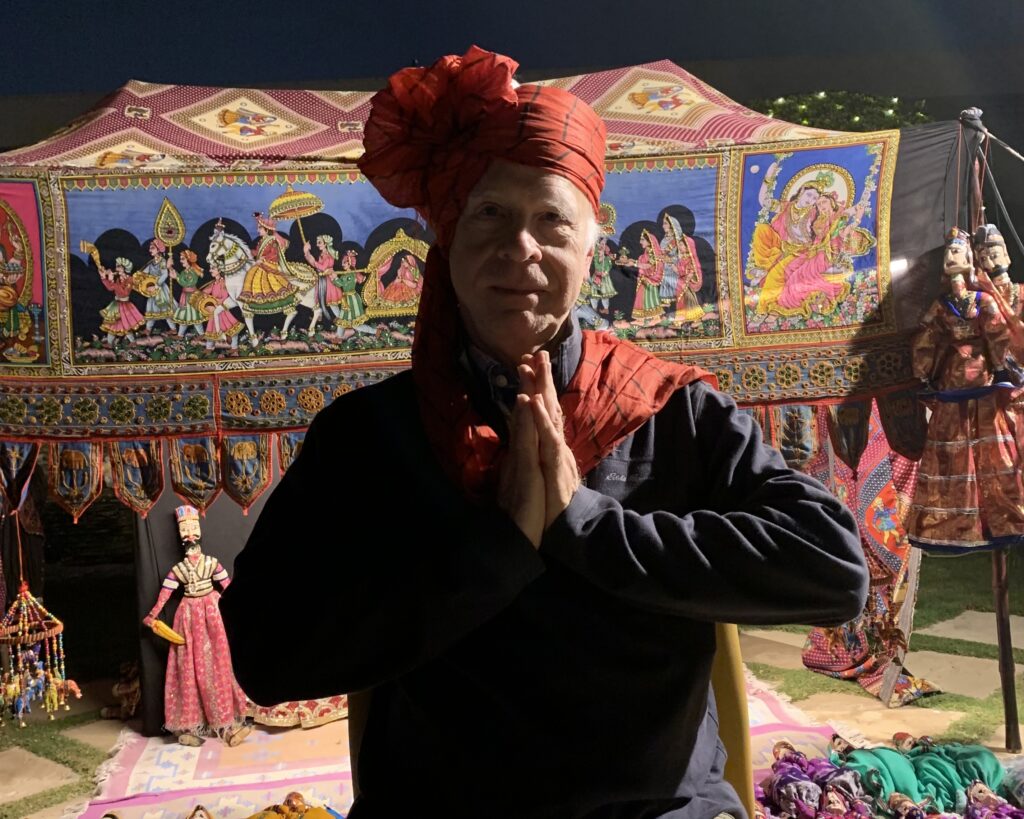
No, not him! The puppet master of a show at our Agra hotel recruited guests to help set the scene (very convincingly).





It’s the Brahmin cow, in particular when it’s white, that’s sacred, although the flat backed ones we’re used to are also revered. (Is that one actually being taken care of a water buffalo, rather than a cow?) In any case, we came to be sorry for the cows out there. We’re told that people watch after and feed them, but we mostly saw the cows scrounging in the trash or in very awkward situations like the one lower left who was up against the median on a very busy multi lane road, though we must admit that on our return trip he had somehow managed to work his way to the other side of the median. Impressive.
Amber (Amer) Fort
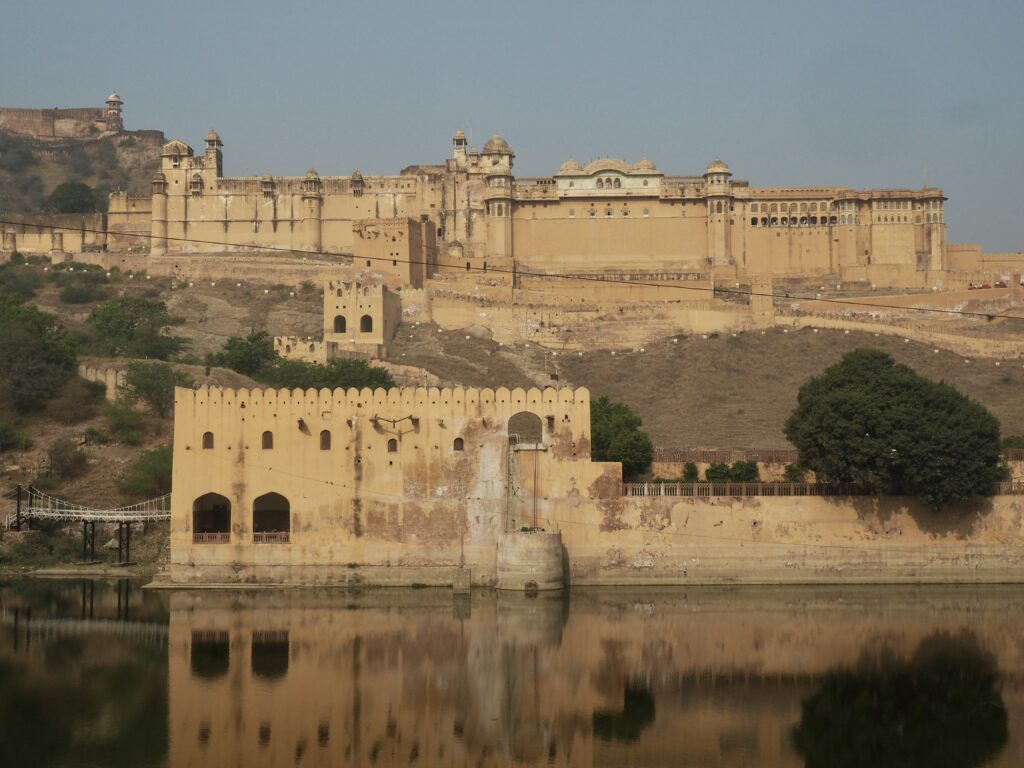


A few miles from Jaipur outside the town of Amer, is a very substantial and stunning hilltop fortress (1592), organized around four interior levels, that was home to the Rajput Maharajas. As sensibilities evolved over the treatment of animals, the prevailing means of transport up the slope became by jeep, although it isn’t nearly as romantic.





Upon entering the fort proper, there’s a stairway/gate up to the next level.

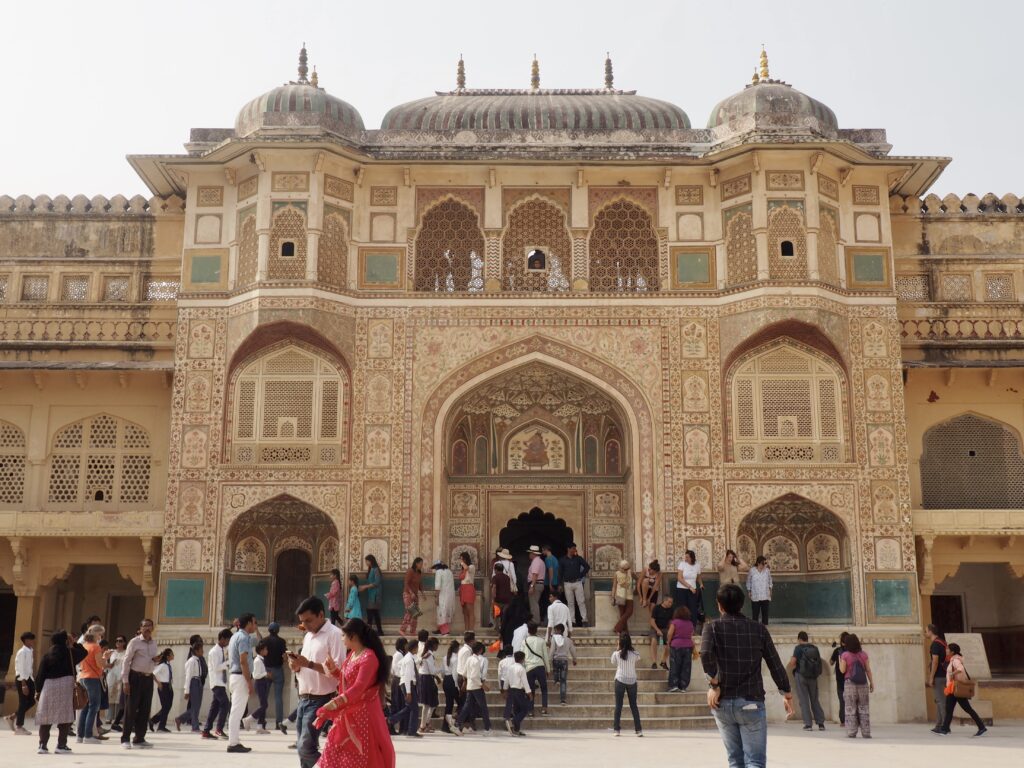
The Maharaja would use the Audience Hall to receive petitions and conduct public business. The Ganesh Gate is the entrance into the private quarters for the Maharaja and his family. The women could discreetly observe events in this main courtyard from behind the latticed top floor windows.
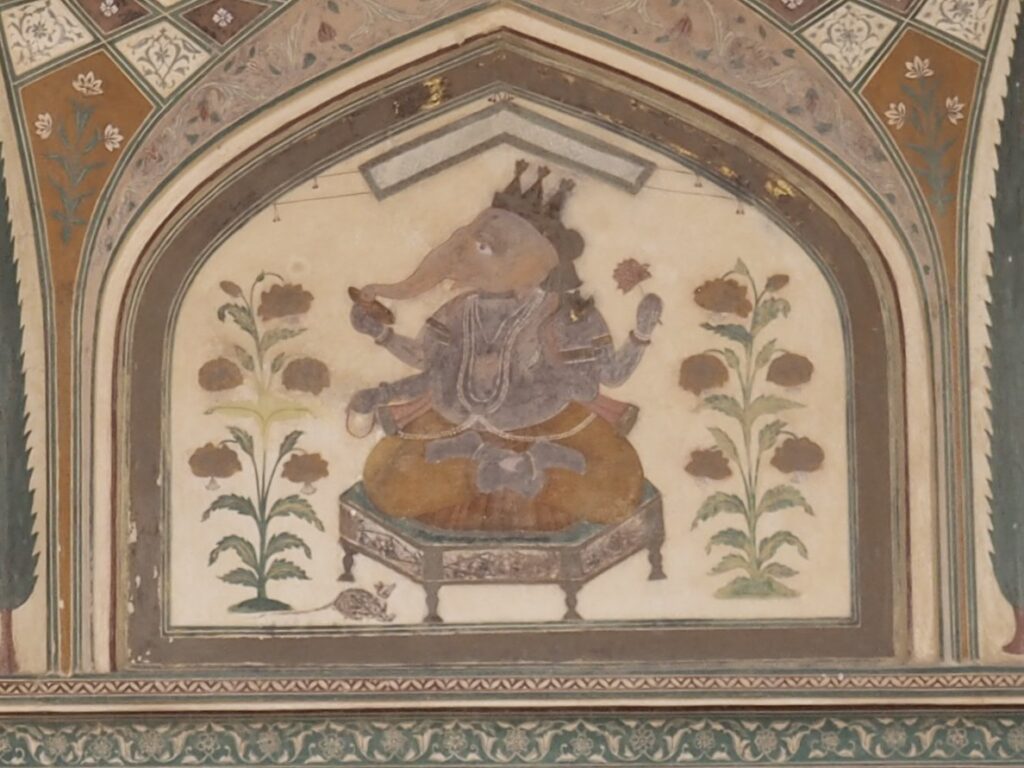

Through the Ganesh Gate and into the private quarters.









Lots of mirror mosaics, silver, colored glass and alabaster relief work makes for a dazzling impression.








Finally, the fourth and most private courtyard for the wives of the maharaja. With 12 wives, there were 12 apartments each with separate entrances. (At this point, we contemporary humans were all standing in the shade when we had the chance, as you can see in the photos.)
Jantar Mantar





In the beginning of the 18th century, the Maharaja of Jaipur constructed 5 solar observatories (Jantar Mantar) in different Indian cities, including Delhi and Varanasi, but of course also Jaipur. In Jaipur is the world’s largest stone sun dial from which the time can be told within an accuracy of 20 seconds (upper left). The observatories were used to compile astronomical tables and are, apparently, still in use today.
City Palace
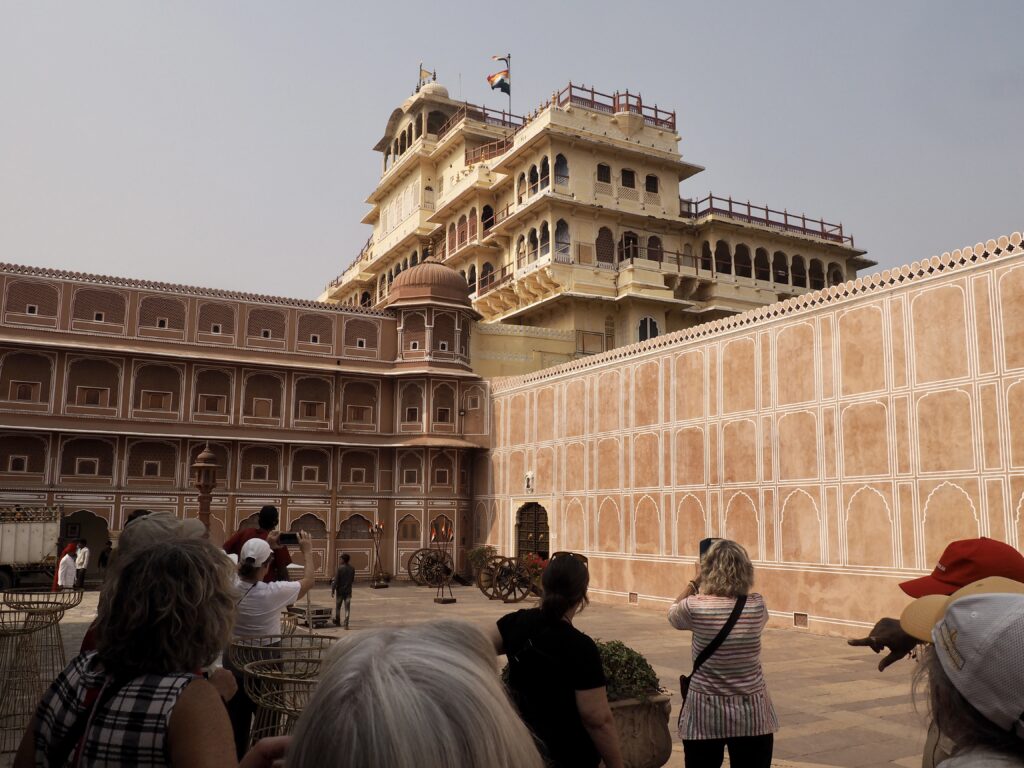
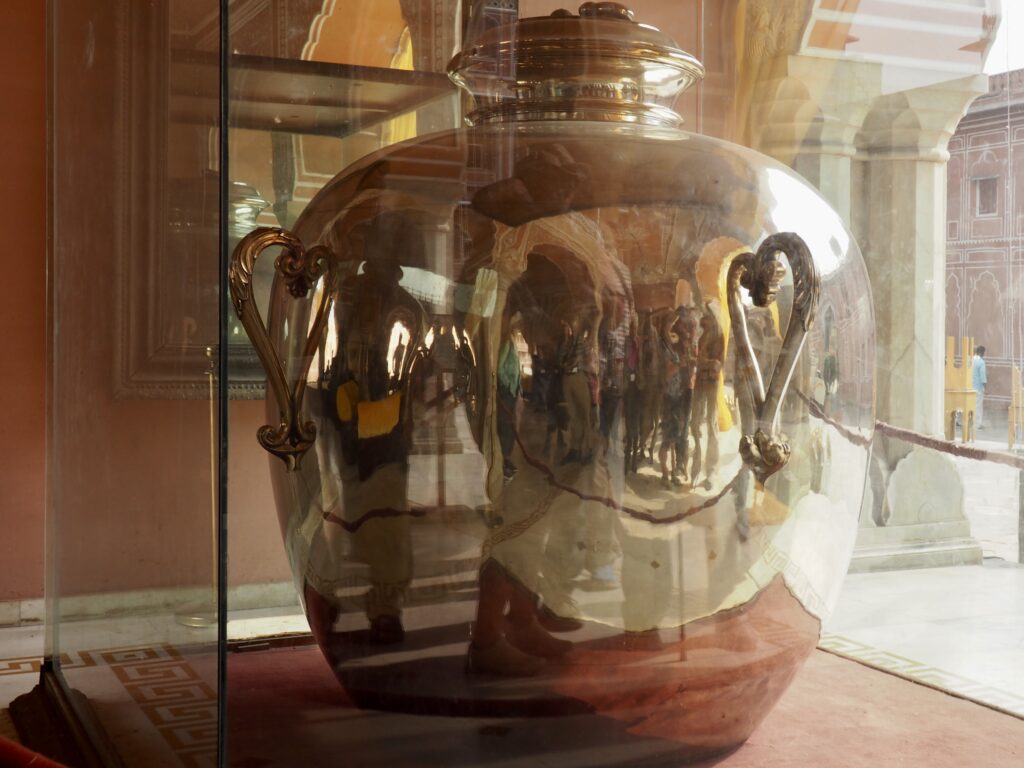




After lunch at a nice restaurant inside the palace, we called it a day!
Dinner at the Smithie-Singhs
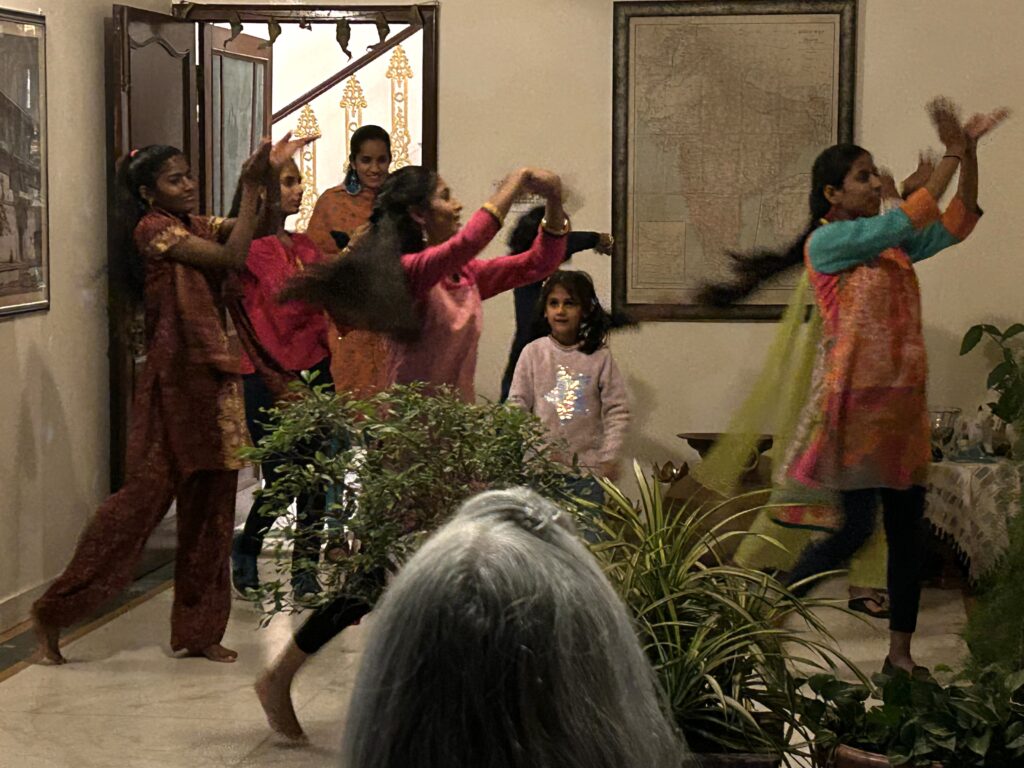
Dinner was unusual. We arrived at the home of a family with 12 daughters and got to visit with them. One of the many themes of our visit to India had been the status of women, as it certainly receives a lot of attention outside of the country. Indeed, one of our guest university lecturers was an expert on women’s issues in India. Of the 12 daughters, 11 had been adopted through social services and all are receiving a good education, encouraged to find their own way. They may sleep three in a bed, but it’s a large bed in a nice home. In fact, they’ve all changed caste and found themselves in a family that’s part of the nobility. The Bollywood dancing was a special treat.

